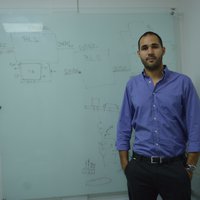International trade has developed rapidly under the
background of economic globalization. Therefore, the production process of
goods has shifted from the final consumption area to the production area, and
the related pollutant emissions have also been transferred, which has changed
the spatial and temporal distribution of atmospheric pollutant emissions and
their environmental and climate effects. What is the impact of economic trade
on the global and regional atmospheric environment? How do we quantify this in science?
This is still a blank field in the world.
Dr. Dan Tong, who is from the University of California, Irvine,
fills this gap. She developed the anthropogenic emission inventories in 2007 by adopting the bottom-up technology-based approach, which revealed the
complex impacts of international trade on global climate forcing aerosol
pollution, and the global premature deaths from ambient PM2.5 pollutions as a
result of economic trade and atmospheric transport for the first time. It’s
worth mentioning that her Nature paper became an ESI hot paper, an
ESI high-cited paper, and was also nominated as one of China's top ten scientific
progresses of that year.
In January 2018, Dan Tong published another paper titled, “Targeted Emission Reductions from Global Super-Polluting Power Plant Units” as the
first author on the first issue of Nature Sustainability. She developed
a new global database of unit-based power plants’ emissions and quantified the
emissions from global super-polluting power plant units for the first time.
Meanwhile, Nature Sustainability published the “News & Views” term “small and bad” on the same issue, and highly praised this work.
In July of 2019, Dan Tong’s paper “Committed Emissions
from Existing Energy Infrastructure Jeopardize 1.5 °C Climate Target” was
accepted by Nature. The IPCC (Intergovernmental Panel on Climate Change)
"Special Report on Global Warming of 1.5 °C" pointed out that
the average global surface temperature is now about 1 °C higher than the
pre-industrial level, warning that we need to seriously transform to achieve
the 1.5 °C global target. Dan Tong's research found that even if only active
and planned basic energy facilities (operating in historical conditions) are
considered, their future carbon emissions will significantly exceed the carbon
emission budget under the 1.5 °C temperature control target. This research will
be cited by the sixth assessment report of the IPCC and is expected to exert
greater influence in the future international community.
In the future, Dan Tong hopes to focus more on future
emission and help decision makers find precise emission reduction methods.




